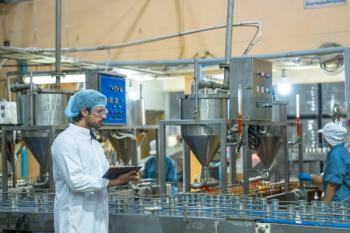Key Points
- A multidisciplinary study led by Yiheng Xian and Hao Ai traced red coral artifacts from the Shengjindian cemetery in Turpan, Xinjiang, China, back to the western Mediterranean using spectroscopic techniques like CT, laser Raman spectroscopy, and LA-ICP-MS.
- The coral’s high barium content and calcareous structure matched the chemical signature of Corallium rubrum (Sardinian red coral), confirming its Mediterranean origin.
- The study underscores red coral’s role as a high-value and religiously significant commodity in ancient China, offering new insights into early globalization and cross-cultural exchange.
A recent study used a combination of gemological, geochemical, and mineralogical analysis to trace the origins of red coral artifacts unearthed in Xinjiang, China, back to the western Mediterranean. This cultural heritage study, which was published in the journal Minerals, showcased how spectroscopic techniques, such as computed tomography (CT), laser Raman spectroscopy, and laser ablation inductively coupled plasma mass spectrometry (LA-ICP-MS), can be used to analyze historical artifacts (1). The team was able to use these techniques to uncover new information about long-distance trade during the Han and Jin dynasties (1).
What was this study focused on?
Led by lead authors Yiheng Xian and Hao Ai of Northwest University and the Shaanxi Provincial Geological Survey Experiment Center, the study focused on red coral relics that were excavated from the Shengjindian cemetery in Turpan. This cemetery is an important archaeological site dating to the Western Han Dynasty and located in the eastern part of Xinjiang (1,2). The cemetery was initially discovered in 2007 (2). Turpan served as a vital hub in the transcontinental trade network connecting China with Central Asia, the Middle East, and Europe.
Archaeologists have conducted numerous excavations to learn more about ancient Chinese history. This study concentrated on analyzing the artifacts discovered from these excavations, using CT, laser Raman spectroscopy, and LA-ICP-MS to characterize these artifacts and determine their likely source (1).
What features of the artifacts were examined?
Several features of the artifacts were examined using spectroscopy. These features include red pigmentation, waxy luster, and concentric ring structures in cross-section (1). One of the main discoveries in this study was the coral’s calcareous composition, particularly its high barium (Ba) content. The Ba content allowed the research team to match the known chemical profile of Corallium rubrum, or Sardinian red coral, which is native to the western Mediterranean (1).
As a result, the geochemical fingerprint of the red coral samples traces its origin back to the western Mediterranean, suggesting that the artifacts uncovered originated there and were transported along several trade routes to northwest China (1).
Meanwhile, laser Raman spectroscopy was used to obtain detailed vibrational spectra from the coral samples. Complementary trace element analyses were performed using LA-ICP-MS at the State Key Laboratory of Geological Processes and Mineral Resources at China University of Geosciences in Wuhan (1).
What are the cultural and archaeological implications of this study?
The cultural and archaeological implications of the findings are important because red coral was a desired commodity in the ancient world. Besides the fact that red coral possesses great monetary value, it also has religious significance and visual appeal (1). In the context of Han Dynasty China, its appearance in burials and ceremonial artifacts reflects both wealth and cosmopolitan influence (1).
This study also helped validate prior historical investigations that suggested red coral reached Turpan through multiple trade routes, not just one. One likely route red coral reached Turpan was through the Grassland Silk Road, which facilitated exchanges between the Eurasian steppe and the Chinese heartland (1). Another trade route was the maritime and overland route that linked the Mediterranean through South Asia and into western China (1). In later periods, these connections grew more frequent and robust, with red coral continuing to appear in archaeological sites farther east.
As a result, this study reinforces the idea that early globalization, driven by trade and religious dissemination, including the spread of Buddhism, was more extensive than previously imagined (1). The researchers’ analysis of the red coral relics connects the Mediterranean Sea to the deserts of Xinjiang, highlighting the international exchange that took place in ancient China.
References
- Xian, Y.; Sun, L.; Ai, H.; et al. Tracing the Source of Red Coral in Xinjiang: Evidence from the Western Han Dynasty Shengjindian Site in Turpan. Minerals 2025, 15 (3), 248. DOI: 10.3390/min15030248
- Jiang, H.; Zhang, Y.; Lu, E.; Wang, C. Archaeobotanical evidence of plant utilization in the ancient Turpan of Xinjiang, China: a case study at the Shengjindian cemetery. Veget. Hist. Archaeobot. 2015, 24, 165–177. DOI: 10.1007/s00334-014-0495-6






